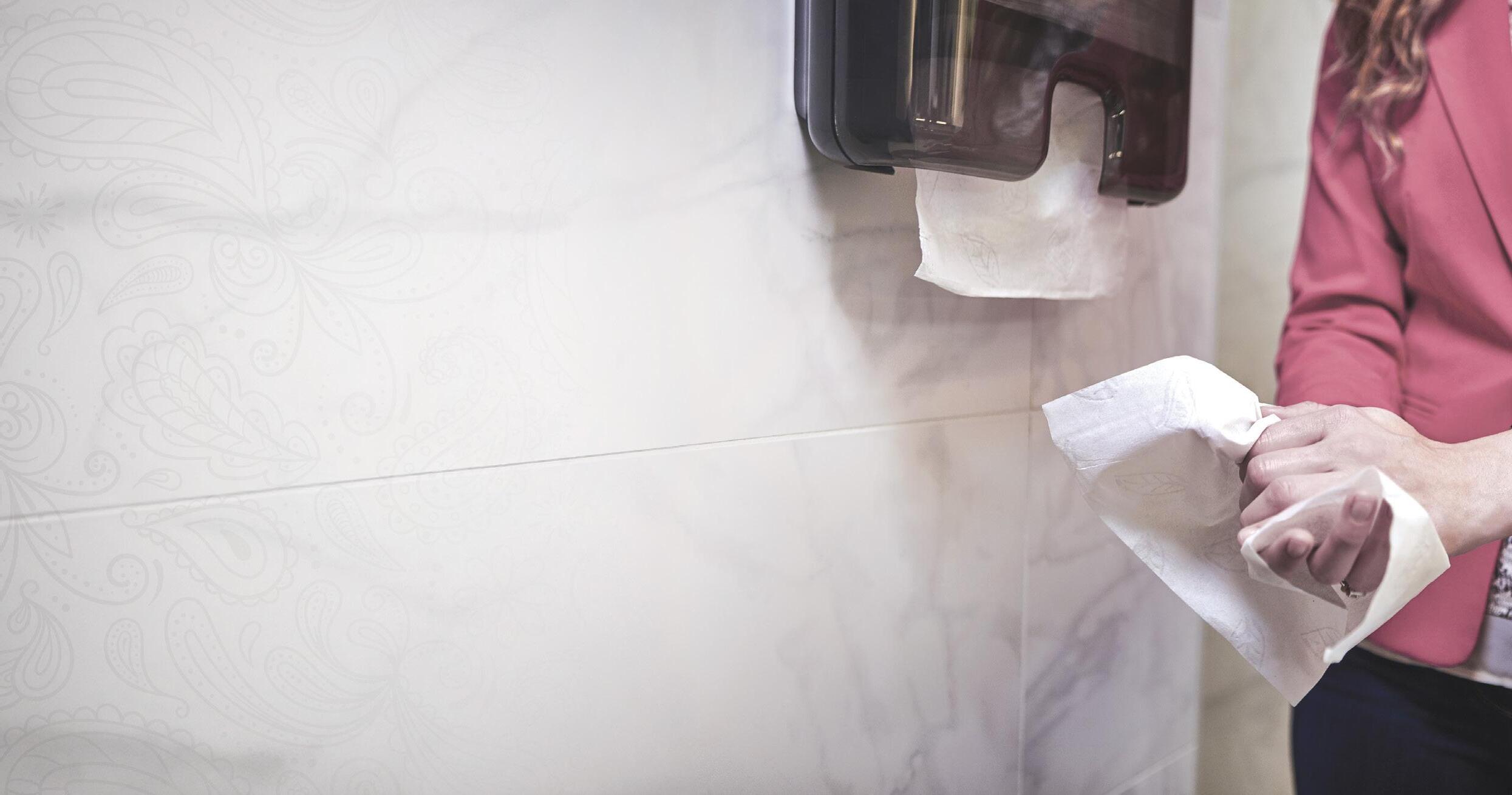
5 minute read
What do women want from a washroom?
The month of August has become synonymous with being a period in the year when we celebrate the role of women in society. South Africa has an exceptional history as it is our women who have played a vital role in shaping the future and the societies we now find ourselves in. South Africa has been celebrating women during the month of August since 1994. It serves as a reminder of the tough and tenacious, gracious and passionate, formidable and, above all, courageous women who have and who continue to shape our future.
In this issue, we take a closer look at the causes of discrepancies between men’s and women’s washrooms and the role of hygiene products within.
Are the needs of a woman in a public washroom so very different from those of a man? Or at the end of the day does everyone simply require a toilet that is clean and sanitary? There are noticeable differences between the public toilets used by men to those frequented by women, according to Tom Marshall from Tork manufacturer, Essity.
The length of the queues is an obvious case in point. The queue for the ladies’ is often much longer than the one for the gents’ – and this is due to several factors. While the same floor space tends to be allocated for both sexes, gents’ facilities usually incorporate a row of urinals whereas the ladies’ will feature cubicles only. This means fewer women can access the toilets at once.
Women also tend to linger longer in the loo, perhaps taking extra time to check their appearance, brush their hair or reapply make-up. Some regard the washroom as a safe haven, visiting in groups to take time out from a busy club, bar or restaurant.
But the length of the queues is not the only disparity between the men’s and women’s facilities. Ladies’ toilets frequently offer “frills” such as vanity mirrors, hand creams and fresh flowers and are also more likely to feature baby change facilities and family rooms than the gents’. They also need to offer sanitary bins and period products –whether the latter are provided free or available from a vending machine depends on the washroom.
Men’s washrooms are generally perceived to be functional spaces for a quick visit. The décor in the gents’ is often more austere with extras such as mirrors being scarce or non-existent. And, many people claim the gents’ tends to be smellier and less hygienic than the ladies’, presumably due to the presence of urinals.
But as society continues to change and the sexes become increasingly equal, why should such differences still occur in the washroom? Surely it is crucial that everyone should have access to a clean, hygienic, and pleasant-smelling space along with adequate hand washing facilities, whatever their gender?
Combining the men’s and women’s toilets is one way in which these inequities could be addressed. This would unify the service provision and ensure that everyone had access to baby-changing stations. It would also make it easier for parents to accompany a child of the opposite sex to the washroom while also helping to iron out any discrepancies in the queues. However, many people are reluctant to share an intimate space with members of the opposite sex, while some women may feel unsafe when sharing a private facility with a man.
So, efforts should be made instead to reduce queueing in women’s facilities while also ensuring that men receive a better level of provision.Disparities will always occur where urinals are provided in the gents’. However, efforts can be made to mask bad smells in all washrooms with an effective air freshening system. And efficient dispensers will help to speed up the queues and minimise the waiting time for everyone.
The Tork Constant Air Freshener helps to keep washrooms smelling fragrant because the scent lasts for up to 90 days before needing a refill. The system uses propellantfree technology to neutralise odours continuously and evenly.
Since female facilities tend to attract longer queues than male ones, all dispensers should be designed to be quick and easy to use and provide a long-lasting supply of soap and paper to prevent runouts.
The Tork Foam Soap dispenser serves up to 1,650 users between refills while the Tork PeakServe ® ContinuousTM Hand Towel dispenser caters for up to 2,100. Both dispensers have been designed to be easy to use, even for people with low hand strength. And the Tork PeakServe dispenser gives out towels in just three seconds to provide a quick throughput.
Where items such as mirrors, hand creams and fresh flowers are offered in the ladies they should also be provided in the gents to create a more welcoming feel. And easy-toclean dispensers designed to attract fewer fingerprints will help to keep all facilities looking clean. For example, Tork Elevation dispensers have smooth, easy-to-clean casings and are available in automatic versions to reduce the problem of finger-marks.
Many institutions are exploring the idea of introducing unisex toilets to remove the inequalities between men’s and women’s toilets. For example, the South African Department of Basic Education is considering doing so in schools to reduce bullying and provide a more inclusive space.
However, proposals also include the provision of individual cubicles with their own hand-washing facilities to provide privacy for those students who desire it.
These types of separate facilities are ideal – but expensive to install which means they tend to be provided merely as an add-on to the traditional, communal facilities. So, it seems that segregated washrooms are here to stay. However, in this age of equality it is important that no-one loses out and that all washrooms are maintained to a high standard of cleanliness and hygiene – whoever their users happen to be.
For more information visit: www.tork.co.za










